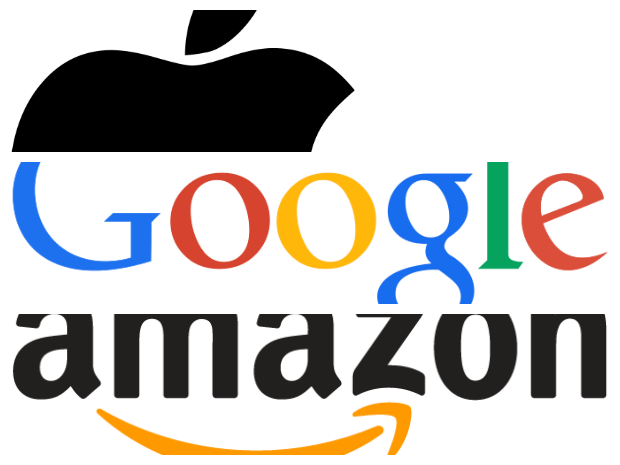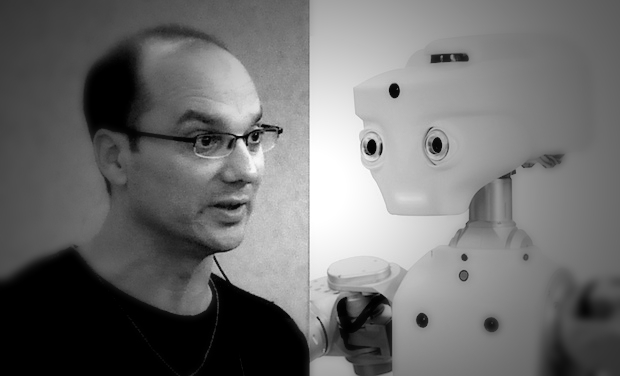
This is a guest post. The views expressed here are solely those of the author and do not represent positions of IEEE Spectrum or the IEEE.
The recent robot-related news from Apple, Amazon, and Google shows serious momentum for the robotics industry. In case you missed it, here's a recap:
Apple announced that it was investing $10.5 billion in supply chain robots and automation equipment and recently confirmed its acquisition of PrimeSense for $350 million (PrimeSense developed the 3D sensing technology originally used in the Microsoft Kinect). Amazon, in a CBS 60 Minutes piece aired early this month, showed off a new concept delivery system using an octocopter. Remember that in 2012 Amazon spent $775 million to acquire Kiva Systems, the warehouse-automation technology enabling robotically-delivered goods to picker/packer workers. And more recently, news broke that Google has set up a robotics division headed by the man behind the Android mobile operating system, Andy Rubin [pictured below]. In Rubin's first six months he has acquired eight robotic companies to jumpstart his new operation. (Google's latest acquisition, confirmed this week, is Boston Dynamics, an engineering company that specializes in building dynamic robots and simulation software. The acquisition adds more than 80 engineers and scientists to the new Google robots division talent pool—plus a new location: Boston Dynamics is located in Waltham, outside Boston.
What does all this activity mean?
First, more details.
From a New York Times article by John Markoff interviewing Google's Andy Rubin:
Google acquired seven tech companies in the last six months. Schaft, a Japanese start-up developing a humanoid robot; Industrial Perception, a Silicon Valley start-up that developed a computer vision system for loading and unloading trucks; Meka Robotics, a robot developer for academia; Redwood Robotics, a start-up intended to compete with the Baxter robot (and others) entering the small and medium-sized shop and factory marketplace; Bot & Dolly, a maker of robotic camera systems used for special effects such as in the movie "Gravity;" Autofuss, a design and marketing firm and a partner in Bot & Dolly; and Holomni, a maker of powered caster modules for omnidirectional vehicles. Although Google won't disclose their plans, the article suggests that the company's initial market will be in manufacturing and logistics, including possibly electronics assembly that is mostly done by hand. "Manufacturing and logistics markets not being served by today's robotic technologies are clear opportunity markets," Rubin told the Times. The article suggests that the new Google robots could be able to automate any or all of the processes from the supply chain to the distribution channels to the consumer's front door, thereby creating a massive opportunity. Google is already experimenting with urban deliveries including making home deliveries for companies like Target, Walgreens, and others. According to Markoff, "Mr. Rubin said he had pondered the possibility of a commercial effort in robotics for more than a decade. He has only recently come to think that a range of technologies have matured to the point where new kinds of automated systems can be commercialized."
From The SFGate Tech Chronicles by James Temple:
Google is transforming itself in many ways, and its new robotics division is another example of that. The company is constantly transforming its search engine into a sophisticated learning machine using AI tools. In fact, some of Google's AI talent might be moving over to the new Robotics Division. Google has been hiring super brains such as Ray Kurzweil and Peter Norvig to head groups and divisions, some of which are working on product development and even hardware manufacturing (remember that Google acquired Motorola, which could be a client for assembly and material-handling robots and a resource of factories, equipment, and manpower). "Google's move into robotics is likely to draw renewed attention and money into the space," said Brian Gerkey (CEO of the Open Source Robotics Foundation) in the article. "It's a pretty exciting day for robotics when someone like Google makes an investment like that in robots, others are likely to follow suit. It can only spur investment and innovation."
From Bloomberg News by Adam Satariano:
Apple is investing $10.5 billion in new automation technologies and robotics to, among other things, polish the iPhone 5C plastic cover, carve the MacBook's aluminum body, and test and inspect gear for iPhone and iPad lenses. Apple invested $6.5 billion on similar robotics and factory automation equipment in their previous fiscal year.
For a review of the CBS 60 Minutes interview of Amazon CEO Jeff Bezos and Charlie Rose, see my post, "Jeff Bezos Reaches for Tip of UAS Iceberg."
From a New York Times article by Markoff about the Boston Dynamics acquisition:
Markoff writes: "The deal is also the clearest indication yet that Google is intent on building a new class of autonomous systems that might do anything from warehouse work to package delivery and even elder care." Boston Dynamics is a 1992 spin-off from MIT, and many of its robots have been feature in popular YouTube videos. One of their BigDog videos has been watched by more than 15 million times; and a video of their ATLAS robot, the robotic platform given to some of the DARPA Robotics Challenge teams, has already passed the 2.5 million view mark. This is not an insignificant acquisition. An ongoing business employing 80-plus highly paid engineers and scientists has to have cost Google a very high amount, perhaps in the low 9 figures. Boston Dynamics founder Marc Raibert was quoted in the article: "I am excited by Andy and Google's ability to think very, very big, with the resources to make it happen."
So what's my take on these recent developments?
I think the above quote from Brian Gerkey sums up things nicely: It's a pretty exciting day for robotics when Google, Apple, and Amazon ALL invest in robots and related tech. Others are likely to follow, spurring further investment and innovation. Up until now, four big European and Japanese firms (Kuka, ABB, Fanuc, and Yaskawa Motoman) dominated the well-established industrial robotics sector, while smaller companies (including U.S. firms like iRobot and Intuitive Surgical) attempted to build and grow the consumer and service robotics markets.
So it's exciting to imagine that in the remainder of this decade we may see amazing new robotics products from a variety of new providers like Apple, Amazon, and Google.






